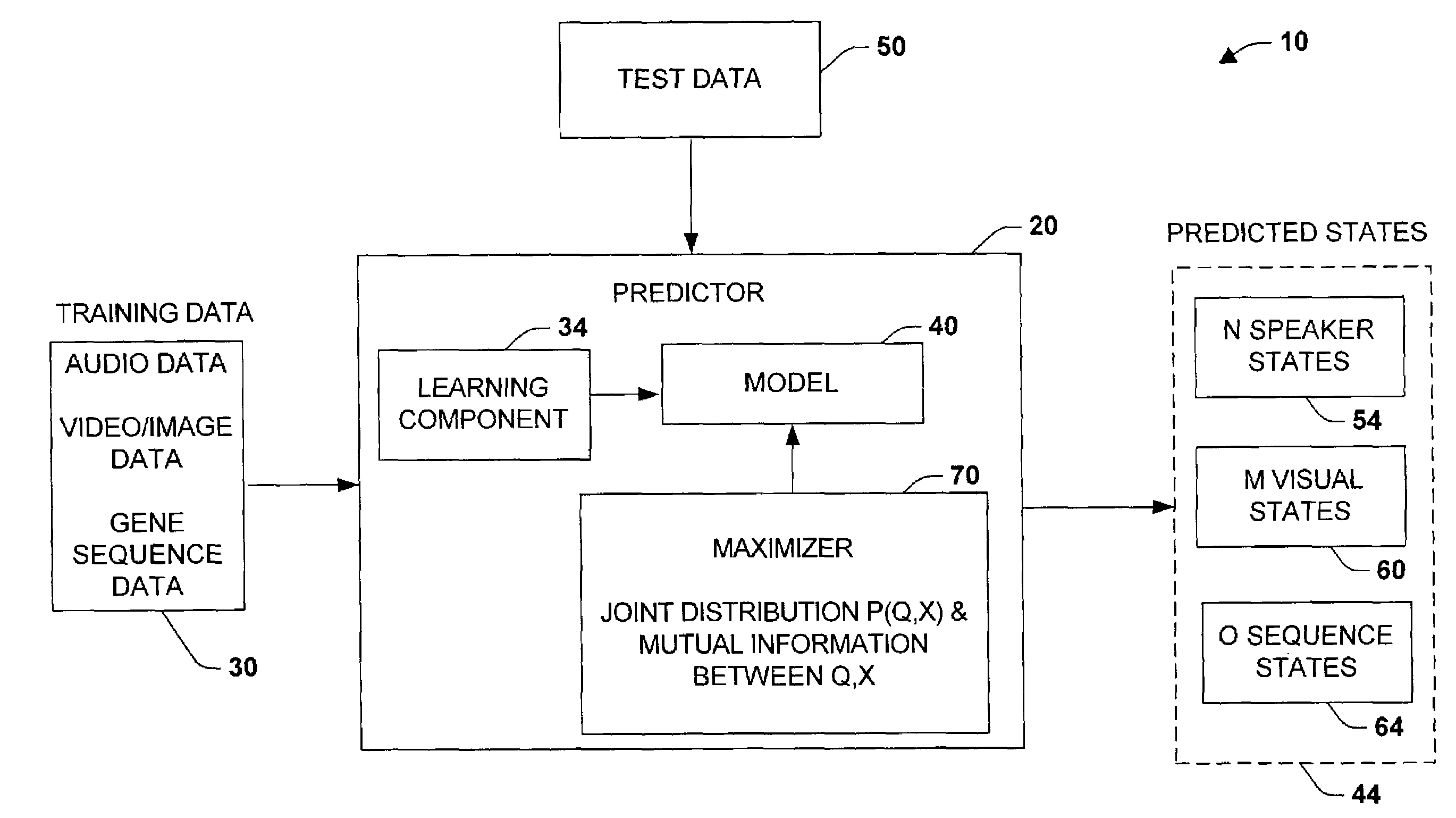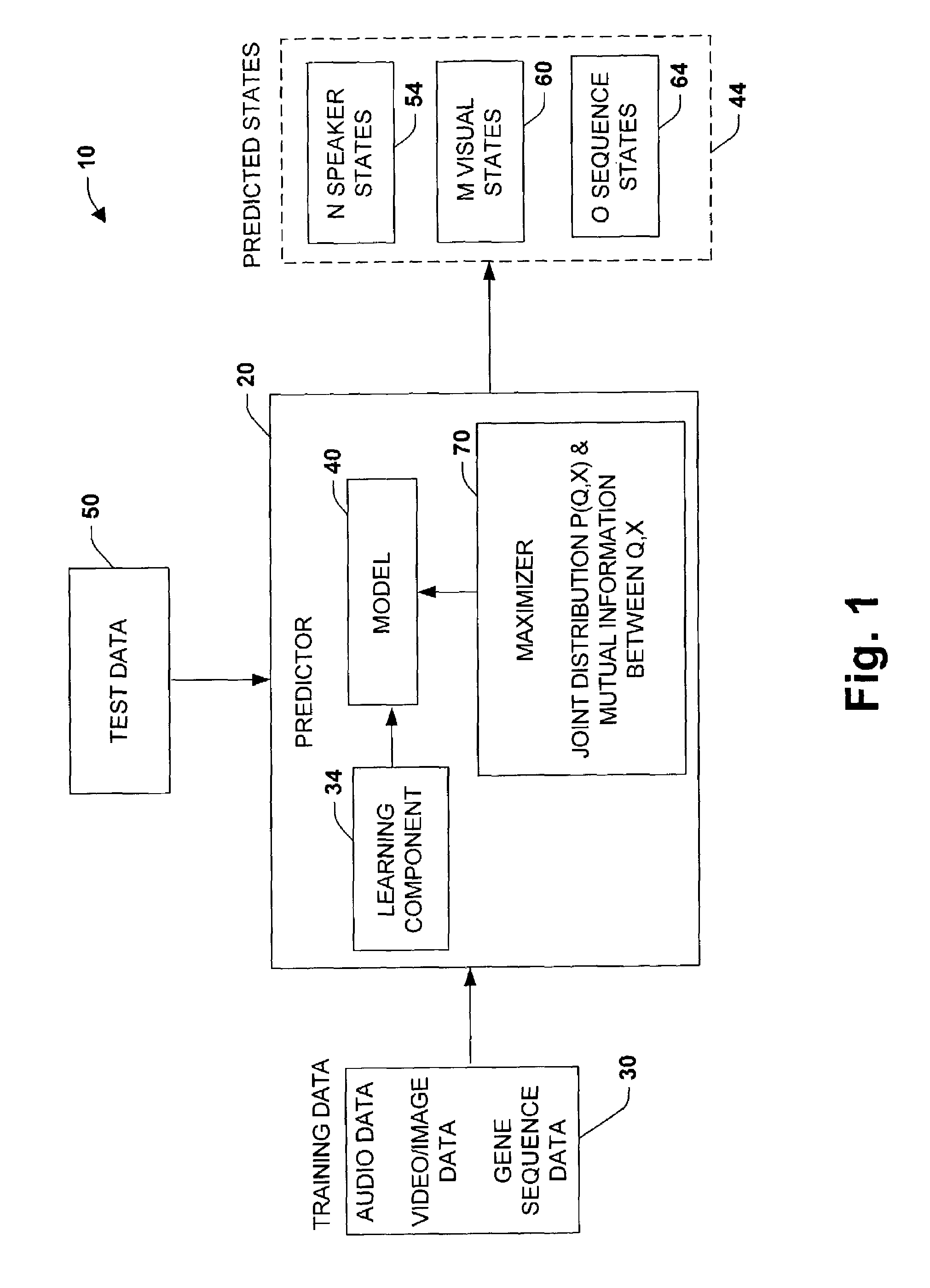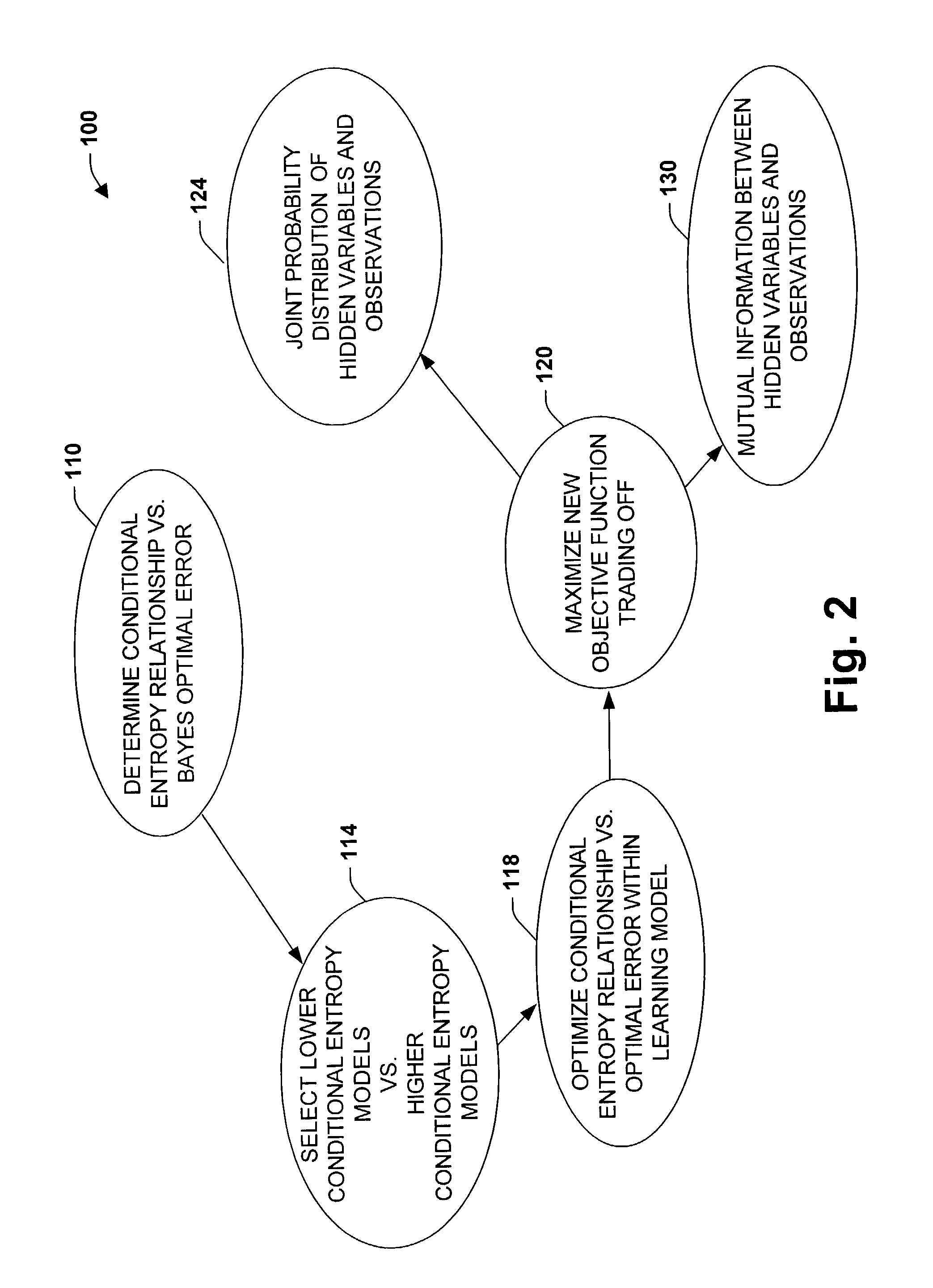Maximizing mutual information between observations and hidden states to minimize classification errors
a mutual information and classification error technology, applied in the field of computer systems, to achieve the effect of facilitating emotion recognition, maximizing mutual information, and facilitating prediction of desired information
- Summary
- Abstract
- Description
- Claims
- Application Information
AI Technical Summary
Benefits of technology
Problems solved by technology
Method used
Image
Examples
Embodiment Construction
[0018]A fundamental problem in formalizing intuitive ideas about information is to provide a quantitative notion of ‘meaningful’ or ‘relevant’ information. These issues were often missing in the original formulation of information theory, wherein much attention was focused on the problem of transmitting information rather than evaluating its value to a recipient. Information theory has therefore traditionally been viewed as a theory of communication. However, in recent years there has been growing interest in applying information theoretic principles to other areas.
[0019]The present invention employs an adaptive model that can be used in many different applications and data, such as to compress or summarize dynamic time data, as one example, and to process speech / video signals in another example. In one aspect of the present invention, a ‘hidden’ variable is defined that facilitates determinations of what is relevant. In the case of speech, for example, it may be a transcription of ...
PUM
 Login to View More
Login to View More Abstract
Description
Claims
Application Information
 Login to View More
Login to View More - R&D
- Intellectual Property
- Life Sciences
- Materials
- Tech Scout
- Unparalleled Data Quality
- Higher Quality Content
- 60% Fewer Hallucinations
Browse by: Latest US Patents, China's latest patents, Technical Efficacy Thesaurus, Application Domain, Technology Topic, Popular Technical Reports.
© 2025 PatSnap. All rights reserved.Legal|Privacy policy|Modern Slavery Act Transparency Statement|Sitemap|About US| Contact US: help@patsnap.com



